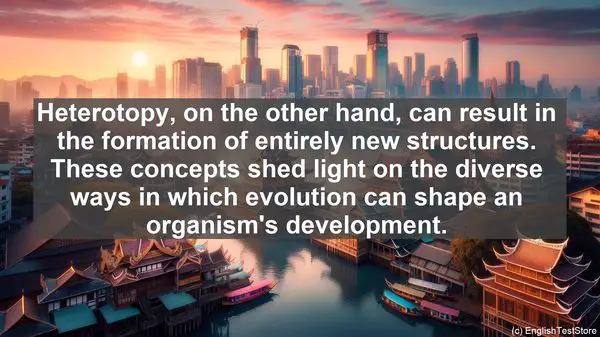Introduction
Welcome back to our series on evolutionary developmental biology. Today, we have an interesting topic lined up. We’ll be discussing the top 10 words that often create confusion in this field. So, let’s get started!

1. Homology vs. Analogy
One of the most fundamental distinctions in evolutionary developmental biology is between homology and analogy. While both terms refer to similarities, they have different origins. Homology signifies traits inherited from a common ancestor, while analogy refers to traits that have evolved independently in different lineages. Understanding this difference is crucial for accurate evolutionary interpretations.
2. Ontogeny vs. Phylogeny
Ontogeny and phylogeny are two terms often used when discussing the development of organisms. Ontogeny refers to the individual development of an organism, from fertilization to adulthood. On the other hand, phylogeny deals with the evolutionary history and relationships between different species. These terms help us understand the intricate connections between an organism’s development and its evolutionary past.

3. Heterochrony vs. Heterotopy
Heterochrony and heterotopy are terms that describe changes in the timing and location of developmental events, respectively. Heterochrony can lead to significant morphological differences, even among closely related species. Heterotopy, on the other hand, can result in the formation of entirely new structures. These concepts shed light on the diverse ways in which evolution can shape an organism’s development.
4. Plesiomorphy vs. Apomorphy
When studying the characteristics of different species, we often encounter the terms plesiomorphy and apomorphy. Plesiomorphy refers to a trait that is ancestral and shared by multiple species. Apomorphy, on the other hand, is a derived trait that is unique to a particular species or lineage. Recognizing these traits is crucial for constructing accurate evolutionary trees.
5. Ectoderm vs. Endoderm
During the early stages of development, an embryo undergoes a process called gastrulation, which leads to the formation of three germ layers. The outermost layer is called the ectoderm, while the innermost layer is known as the endoderm. These layers give rise to various tissues and organs in the adult organism. Understanding their roles is essential for comprehending the complex process of development.
6. Homoplasy vs. Synapomorphy
Homoplasy and synapomorphy are terms used when discussing similarities between species. Homoplasy refers to traits that are similar but not due to a common ancestor. These similarities can arise due to convergent evolution or other factors. Synapomorphy, on the other hand, signifies traits that are shared by a group of species due to a common ancestry. Distinguishing between these terms is crucial for accurate evolutionary analyses.
7. Polymorphism vs. Monomorphism
In a population, individuals can exhibit different forms or phenotypes for a particular trait. This is known as polymorphism. On the other hand, if all individuals have the same phenotype for a trait, it is called monomorphism. Polymorphism can have various evolutionary implications, including adaptation to different environments or mate choice. Understanding these terms helps us explore the diversity within a population.
8. Sympatric vs. Allopatric
When studying the distribution of species, we often encounter the terms sympatric and allopatric. Sympatric species occur in the same geographic area, while allopatric species are geographically separated. These different distributions can have profound effects on the genetic and ecological interactions between species. Recognizing these terms is essential for understanding the factors that shape biodiversity.
9. Vestigial vs. Rudimentary
Vestigial and rudimentary are terms used to describe structures that have lost their original function. Vestigial structures were once functional in an ancestor but have become reduced or non-functional in the present organism. Rudimentary structures, on the other hand, are underdeveloped or incomplete. These structures provide valuable insights into an organism’s evolutionary history and the selective pressures it has faced.
10. Parallelism vs. Convergence
Parallelism and convergence are terms used to describe the evolution of similar traits in different lineages. Parallelism refers to the independent evolution of similar traits in closely related species. Convergence, on the other hand, signifies the evolution of similar traits in distantly related species due to similar selective pressures. Recognizing these patterns of evolution is crucial for understanding the dynamics of biodiversity.
